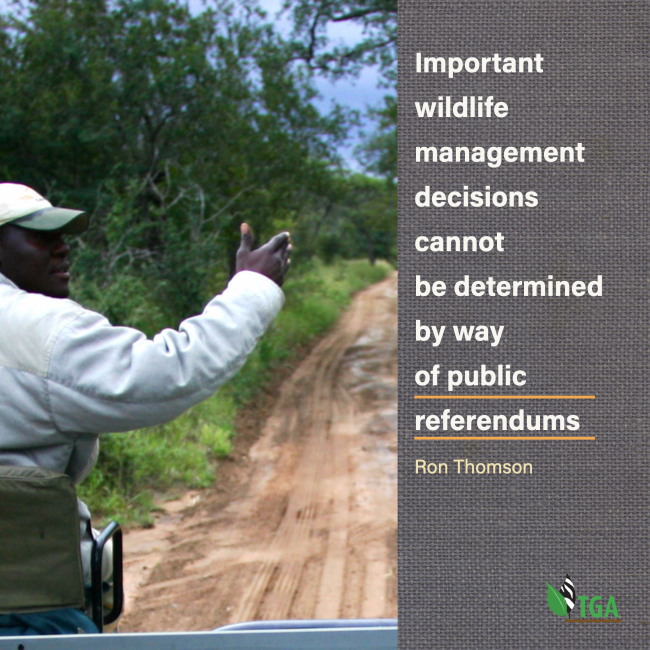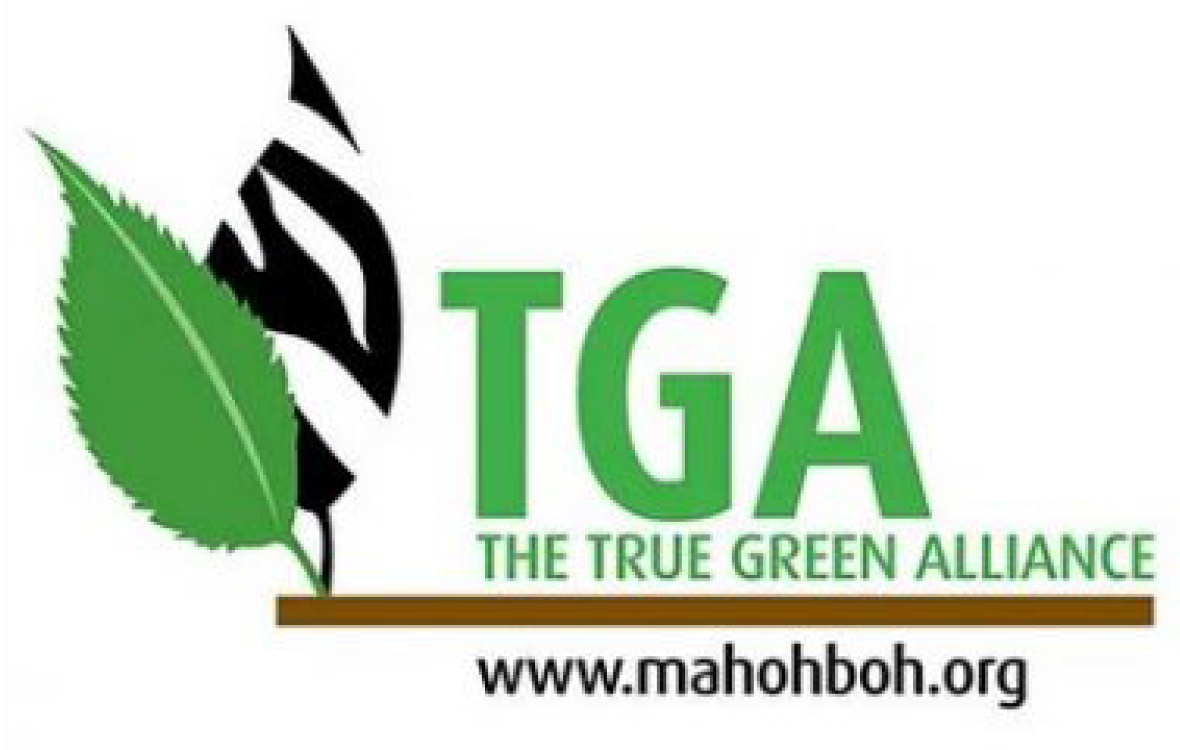“Conservation”, a.k.a. Wildlife Management, is the art and craft of manipulating the principles that govern the processes of nature – to achieve man-designed objectives. There is nothing ‘natural’ about wildlife management. It is man conceived, man designed, man applied, man implemented, man manipulated and man is the principle beneficiary. Why is man the principle beneficiary? Because it is man’s desired objectives that are achieved.
‘Conservation’ can have many kinds of man-desired objectives.
In the case of man ‘managing’ a national park, however, man need have only one primary management objective – to maintain the park’s biological diversity. If he achieves THAT objective all other human desiderata for the national park will fall into place naturally. Why is that? Because to maintain a national park’s animal diversity in a safe and healthy condition, man must maintain all the habitats in the park in a safe and healthy condition, too. And if the habitats are O.K. then the animals that are especially adapted to live within them will be O.K. also.
A park’s biological diversity, of course, covers all its living organisms, both plants and animals. Many people, however, see a national park as being a refuge just for animals. That is not so. A national park is a complex living organism in itself, with the soil, the wild animals and the wild plants all living in a state of homeostatic harmony together, the one being equally reliant on the other.
This is not quite true! The fact is, because the animals are more reliant on the plants, which represent their essential habitats (homes), their food supplies and the vital environmental conditions that surround them for their survival, it would be safe to say that the habitats are more important than the animals. The fact is, most plants can live in the absence of animals but animals cannot live without the plants. It is a moot point, therefore, to determine which of these two deserves the greater consideration: the chicken or the egg?
In 1948 the United Nations (which replaced the League of Nations in 1945) created an international organization called The International Union for the PROTECTION of Nature (IUPN) and it invited all sovereign states to join. It got few takers, however, because most sovereign states after World War II, especially those with abundant and valuable wildlife resources, wanted to harvest those resources in a sustainable manner for the benefit of their people. And they saw the IUPN as an impediment to that desideratum.
The IUPN, however, came to understand this problem. So, in 1956 they changed the organization’s name to The International Union for the CONSERVATION of Nature (The IUCN) – and that changed everyone’s perception of the organization’s intentions. Sovereign states, thereafter, flocked to join the team. In the process of this maneuver, the IUCN actually restructured the meaning of the word CONSERVATION which, thereafter, came to imply sustainable use. And the words PROTECTION and PRESERVATION were removed from the sustainable-use equation altogether. But even that is not desirable because preservation (protection from all harm) has an important role to play, too.
Since 1956, however, some elements of society have been using the word conservation in a whole host of different ways, many with conflicting meanings, including using it as a synonym for preservation. This has just added to the confusion surrounding the whole scientific concept of wildlife management.
The international animal rights brigade, for example, even calls itself The Conservation Community when its whole purpose in life is to STOP the sustainable use of wild animals. What a misnomer that name has turned out to be!
Only when mankind understands the wildlife management vocabulary, what its words are, what they mean, and how they are applied in the science of wildlife management, will we humans be able to converse amongst ourselves in the same language. Humanity is still very far from achieving that level of understanding. And the animal rightists use the word conservation as a smokescreen, all the time, to hide their real purpose in life from the man in the street. So much so is this a problem for me that I tend to avoid using the word conservation altogether.
Wildlife management is a science that is based on ecology. And ecology is the science of determining the relationship that exists between a living organism (a living plant or a living animal) and its environment; and its relationship with the other living organisms (plants and animals) with which it shares that environment.
Thus a scientist will study a game reserve’s elephant population and the impact the elephants are having on their habitat (that is, on the vegetation) and how the damage the elephant population is causing to the big trees, which directly and adversely affects the survival of the big eagles, the vultures and the ground hornbills in the same game reserve. Altogether THAT combination of research would comprise a single-entity ecological study. And the scientist’s management conclusion (if he were an honest scientist) would probably be that there are too many elephants in the game reserve; and his management recommendations might well be that the elephant population should be immediately reduced in number by 50% (to begin with).
Before any such management is applied, however, the scientist must, first, determine just how many elephants there are in the game reserve. Next, he must determine what the game reserve’s elephant habitat carrying capacity is. And the elephant carrying capacity figure for Kruger National Park is 3500.
Carrying capacity can be defined as being the maximum number of elephants that the game reserve can carry without the elephants permanently damaging the habitat (the vegetation) that they depend upon for survival.
And the management decision MUST be – if the habitats are to be saved from permanent damage – to remove, at least, the number of elephants that make up the difference between the total population size and the game reserve’s sustainable elephant carrying capacity. And the experienced wildlife manager will recommend that a significant extra number of elephants be removed at the same time – to help the habitats to recover quickly from the excessive elephant feeding pressure they have been forced to endure for years. Remember, the health of the habitats is far more important than the lives of a few extra elephants.
The important issue to remember here is that the wildlife management deliberations concern the numbers of elephants in the park relative to the condition of their habitats.
The basic elephant population issue to consider, other than being able to determine the habitat’s elephant carrying capacity, is the total number of elephants present in the game reserve. If that number is well below the elephant carrying capacity figure, the manager will categorize the elephant population as being UNSAFE. If it is at roughly at the right number he would call the population SAFE. And if is it excessively higher than the sustainable elephant carrying capacity figure, he would call the population EXCESSIVE.
These differences provide us with the guidelines we need to properly determine how we need to manage the elephant population in question.
- UNSAFE populations need to be subjected to PRESERVATION Management (protection from all harm). No culling. No hunting. One hundred percent protection.
- SAFE populations need to be subjected to CONSERVATION Management. That means they ONLY require the equivalent of their annual incremental increase to be culled. This will be enough to keep the population stable and to make sure it does not become EXCESSIVE.
- EXCESSIVE populations need drastic POPULATION REDUCTION Management – which will entail, at the least, an immediate 50% reduction in overall numbers. And, maybe, the same again next year.
I understand that Kruger National Park is currently carrying 34 000 elephants. So my recommendation for elephant management action in Kruger is that c.30 000 elephants should be culled immediately. In Botswana – where the elephant population stands at 220 000 – (as another example) – my recommendation is that, at least, 100 000 elephants need to be culled immediately.
And when it comes to South Africa’s commercial Wildlife Industry in general, I approve of hunters and game ranch owners allocating their entire annual incremental increases to being harvested by hunting and/or by culling. Sustainability is what we are looking for on our game ranches and game reserves – sustainability in numbers, sustainability in trophy qualities, sustainability in habitat health. Nothing less should be our targets other than optimum best. And those objectives are very achievable.





